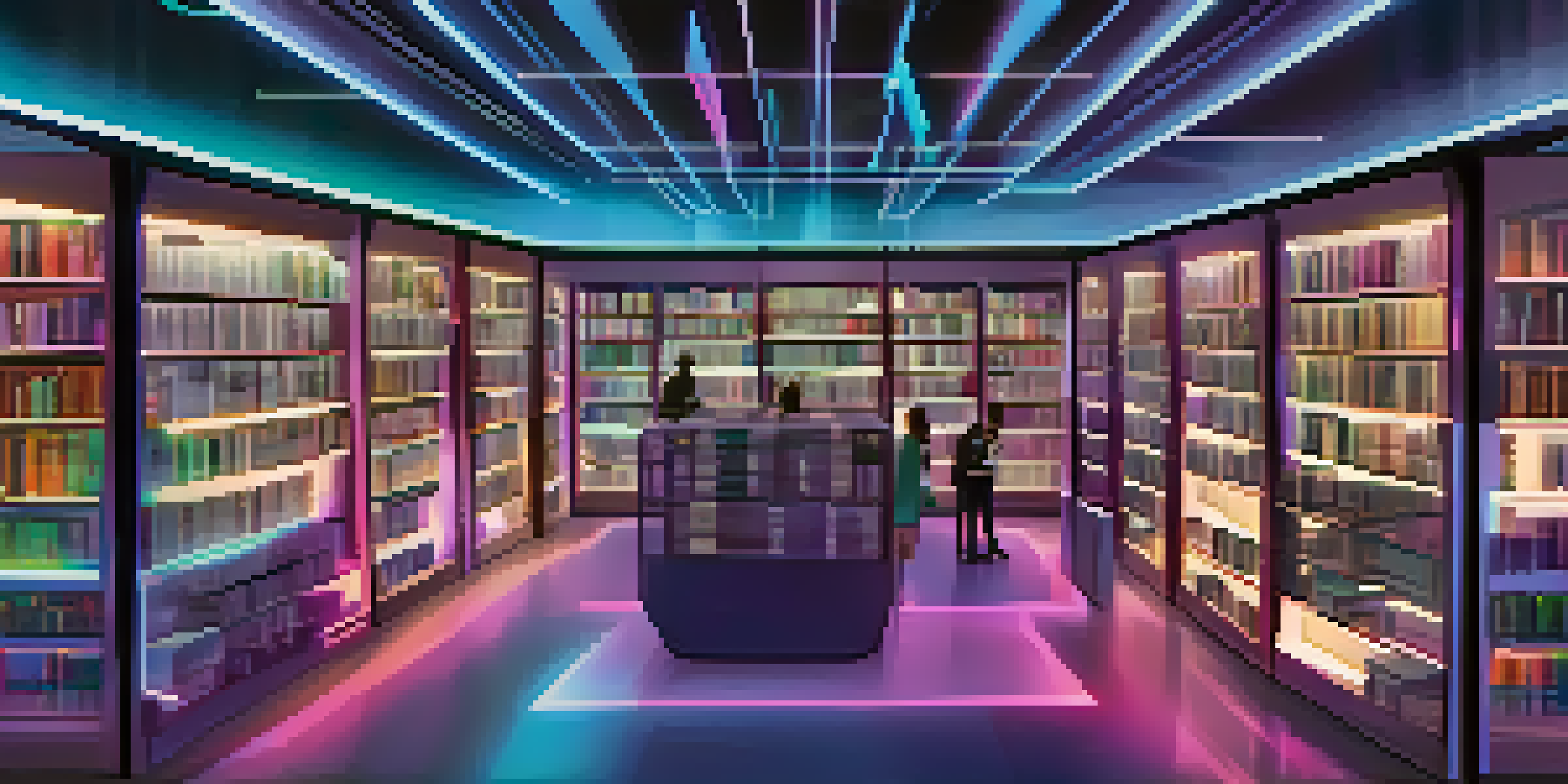The Intersection of Blockchain and Digital Storytelling

Understanding Blockchain's Core Principles
At its essence, blockchain is a decentralized digital ledger that records transactions across many computers. This means that once data is entered, it cannot be altered without consensus from the network, ensuring its integrity. Imagine a library where every book's history is meticulously recorded and cannot be changed, protecting the authenticity of the information.
Blockchain is the ultimate trust machine.
This transparency and security are vital for industries where trust is paramount. For instance, in journalism, using blockchain can verify the authenticity of sources and the integrity of information shared. By leveraging these principles, digital storytelling can evolve into a more credible and trustworthy medium.
Moreover, the decentralized nature of blockchain allows creators to maintain ownership of their narratives. Instead of relying on centralized platforms, storytellers can directly connect with their audiences, fostering a sense of community and engagement that traditional methods often lack.
The Rise of NFTs in Storytelling
Non-fungible tokens (NFTs) have created a buzz in the digital art world, but their implications for storytelling are vast. NFTs represent unique digital assets, allowing creators to sell their stories, characters, or entire narratives as collectible items. Think of it like owning a rare book; each NFT is a one-of-a-kind piece that can hold significant value.

This technology not only provides a new revenue stream for storytellers but also adds an element of exclusivity for fans. Imagine owning a piece of your favorite author's unpublished work or a character that has become part of your digital life. It transforms the reader's experience, making them feel like active participants in the story.
Blockchain Ensures Story Integrity
Blockchain's decentralized nature guarantees that digital narratives are securely recorded and cannot be altered without consensus, preserving their authenticity.
Additionally, NFTs can include smart contracts that ensure creators receive royalties on future sales. This means that as a story gains popularity and value, the original creator continues to benefit, fostering a sustainable creative ecosystem.
Enhancing Audience Engagement through Blockchain
Blockchain's unique features allow for interactive storytelling that can deeply engage audiences. With decentralized platforms, readers can influence the direction of a story or vote on character decisions, creating a collaborative narrative experience. Picture a story where the audience can decide whether the hero takes a left or a right turn at a crossroads.
In the digital age, storytelling is no longer a one-way street; it’s a collaborative journey.
This level of involvement not only enhances the enjoyment of the narrative but also builds a loyal community around the story. As audiences feel more connected to the characters and plotlines, they are more likely to share their experiences and promote the story organically. It’s a win-win for both creators and fans.
Furthermore, blockchain can facilitate the creation of fan-driven content, allowing users to contribute to the story universe. This participatory approach can lead to richer storytelling, as diverse perspectives and ideas are woven into the narrative fabric.
Preserving Digital Narratives with Blockchain
One of the significant challenges in digital storytelling is the preservation of content over time. Digital formats can become obsolete, and links can break, leading to the loss of valuable narratives. Blockchain offers a solution by providing a permanent and immutable record of stories, ensuring they are preserved for future generations.
Imagine having the ability to access a timeless digital library where every story ever told is safely archived. By utilizing blockchain, creators can ensure that their works remain accessible and intact, regardless of technological advancements. This preservation is especially crucial for cultural narratives that shape our understanding of history.
NFTs Transform Story Ownership
Non-fungible tokens enable creators to sell unique digital assets and narratives, fostering exclusivity and new revenue streams in storytelling.
Additionally, blockchain can facilitate the creation of digital heirlooms, where stories can be passed down through generations. Families could share their histories in a secure format, fostering a connection to their roots and heritage.
Challenges and Limitations of Blockchain in Storytelling
While blockchain offers exciting possibilities, it also comes with challenges that storytellers need to consider. The technology is still relatively new, and many potential creators may not be familiar with how to navigate it. This learning curve can be a barrier to entry for those looking to leverage blockchain for their narratives.
Moreover, the environmental concerns associated with blockchain, especially proof-of-work systems, have raised questions about sustainability. Writers and artists must weigh the benefits of using this technology against its ecological impact. Finding eco-friendly alternatives will be essential as the industry evolves.
Lastly, the volatile nature of cryptocurrencies can pose risks for creators relying on platforms that utilize them. Fluctuations in value can affect earnings, making financial stability a concern for those entering this space. It's essential for storytellers to stay informed and adapt to these challenges.
Real-World Examples of Blockchain Storytelling
Many innovative projects are already exploring the intersection of blockchain and storytelling. For instance, platforms like Audius allow musicians to share their music while retaining ownership and earning directly from their fans. This model can be replicated across various storytelling mediums, empowering creators in unprecedented ways.
Another example is the 'Lost Poets' project, which combines poetry with NFTs to create a unique experience for collectors. Each piece sold not only provides a tangible asset but also connects the buyer directly with the poet, fostering a deeper relationship. Projects like these showcase the potential of blockchain to redefine how we interact with narratives.
Interactive Narratives Engage Audiences
Blockchain facilitates interactive storytelling where audiences can influence plot directions, enhancing engagement and community building around stories.
These real-world applications highlight that the future of storytelling is already being shaped by these technologies. As more creators experiment with blockchain, we can expect to see a surge of innovative narratives that challenge traditional storytelling models.
The Future of Digital Storytelling with Blockchain
Looking ahead, the synergy between blockchain and digital storytelling holds immense potential. As technology continues to evolve, we can anticipate more sophisticated platforms that enhance the storytelling experience. Imagine immersive environments where audiences can step into a story and interact with it in real-time, all secured by blockchain.
Moreover, as the community of storytellers grows, we may see a shift in how narratives are created and consumed. Collaborative storytelling could become the norm, breaking down barriers between creators and audiences. This shift could lead to richer, more diverse narratives that reflect a broader range of experiences and cultures.

Ultimately, the intersection of blockchain and digital storytelling invites us to rethink how we share and engage with stories. By embracing these changes, we can foster a more inclusive and innovative storytelling landscape that resonates with future generations.